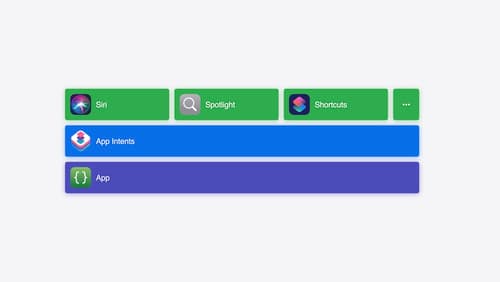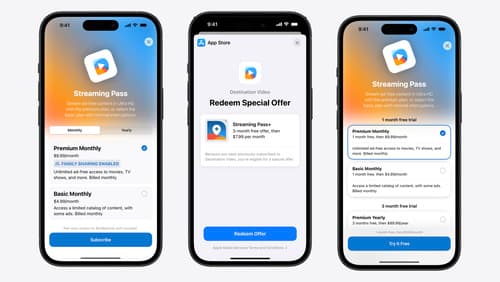What is a content configuration?
Asked on 2024-08-01
1 search
A content configuration in the context of Apple's WWDC presentations refers to a way to define and manage different states or variants of content within an application. This concept is used across various Apple platforms and technologies, including Quick Look, UIKit, and App Intents.
Quick Look
In Quick Look, configurations allow you to switch between different variants of a 3D model or other content types. For example, you can preview different colors of an iPhone model within a single file, rather than needing separate files for each color. This is particularly useful for exploring different options before making a purchase or for educational purposes, such as learning about planets in the solar system.
UIKit
In UIKit, content configurations are used to manage the appearance and behavior of UI elements. For instance, the UIListContentConfiguration and UIBackgroundConfiguration classes allow you to define how list cells and their backgrounds should look and behave. These configurations automatically update their properties to match the style of the list, making it easier to maintain a consistent appearance across different states.
App Intents
In the context of App Intents, a configuration intent is an intent that conforms to WidgetConfigurationIntent. This allows widgets and controls to be configurable based on user-defined parameters. For example, a widget can be configured to display information about a specific trail, and this configuration can be reused across different parts of the app.
Relevant Sessions
- What’s new in Quick Look for visionOS
- What’s new in UIKit
- Bring your app’s core features to users with App Intents
- Extend your app’s controls across the system
These sessions provide detailed insights into how configurations can be implemented and utilized across different Apple platforms and technologies.

What’s new in Quick Look for visionOS
Explore how Quick Look in visionOS can elevate file preview and editing experiences in your app. We’ll cover the integration of in-app and windowed Quick Look, as well as a brand-new API that customizes the windowed Quick Look experience in your app. We’ll also share the latest enhancements to viewing 3D models within Quick Look.

Bring your app’s core features to users with App Intents
Learn the principles of the App Intents framework, like intents, entities, and queries, and how you can harness them to expose your app’s most important functionality right where people need it most. Find out how to build deep integration between your app and the many system features built on top of App Intents, including Siri, controls and widgets, Apple Pencil, Shortcuts, the Action button, and more. Get tips on how to build your App Intents integrations efficiently to create the best experiences in every surface while still sharing code and core functionality.

What’s new in StoreKit and In-App Purchase
Learn how to build and deliver even better purchase experiences using the App Store In-App Purchase system. We’ll demo new StoreKit views control styles and new APIs to improve your subscription customization, discuss new fields for transaction-level information, and explore new testability in Xcode. We’ll also review an important StoreKit deprecation.
